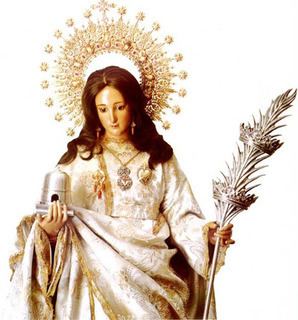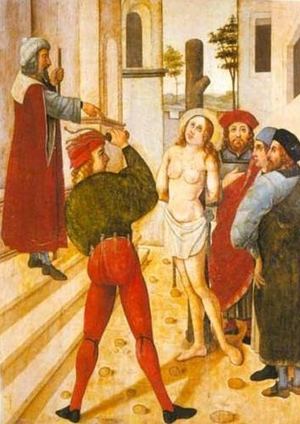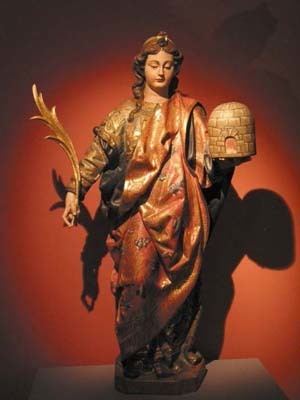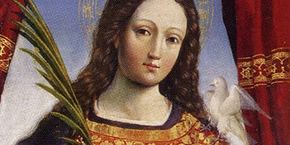Feast December 10 Role Martyr | Name Eulalia Merida | |
 | ||
Major shrine Cathedral of San Salvador Died December 10, 304 AD, Merida, Spain | ||
Attributes cross, stake, and dove | ||
Eulalia of Mérida was a young Roman Christian martyred in Emerita, the capital of Lusitania (modern Mérida in Spain), conventionally during the persecution under Diocletian and Maximian. Other views place her death at the time of Trajan Decius (AD 249-51). There is debate whether Saint Eulalia of Barcelona, whose story is similar, is the same person.
Contents

Hagiography

Eulalia was a devout Christian virgin, aged 12–14, whose mother sequestered her in the countryside in AD 304 because all citizens were required to avow faith in the Roman gods. Eulalia ran away to the law court of the governor Dacian at Emerita, professed herself a Christian, insulted the pagan gods and emperor Maximian, and challenged the authorities to martyr her. The judge's attempts at flattery and bribery failed. According to the Spanish-Roman poet Prudentius of the fifth century, who devoted book 3 of his Peristephanon ("About martyrs") to Eulalia, she said:
Isis Apollo Venus nihil est,Maximianus et ipse nihil:illa nihil, quia facta manu;hic, manuum quia facta colit(Isis, Apollo and Venus are naught,Nor is Maximian anything more;Nothing are they, for by hand they were wrought,He, for of hands he the work doth adore)
She was then stripped by the soldiers, tortured with hooks and torches, and burnt at the stake, suffocating from smoke inhalation. She taunted her torturers all the while, and as she expired a dove flew out of her mouth. This frightened away the soldiers and allowed a miraculous snow to cover her nakedness, its whiteness indicating her sainthood. For this reason she is regarded among Catholic school children and teachers alike as the patron saint of snow (inclement weather) days, according to Ian Gibbons, SJ.

A shrine over her tomb was soon erected. Veneration of Eulalia was already popular with Christians by AD 350; Prudentius' poem increased her fame and relics from her were distributed through Iberia. Bishop Fidelis of Mérida rebuilt a basilica in her honor around AD 560. Her shrine was the most popular in Visigothic Spain. In c. 780 her body was transferred to Oviedo by King Silo. It lies in a coffin of Arab silver donated by Alfonso VI in 1075. In 1639, she was made patron saint of Oviedo. She appears in Thieleman J. van Braght, Martyrs Mirror: An account of Those who Suffered in the Fourth Century (1660).
Julia of Mérida
Often linked with Eulalia is Saint Julia of Mérida, as in the double dedication to Saints Eulalia and Julia. Julia is also said to have been a young girl martyred at Mérida in 304, in the same persecution by Diocletian, and her feast day is also celebrated on 10 December.
